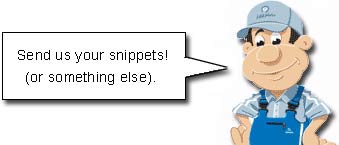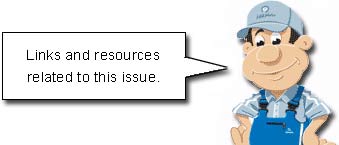|
|
Contents Listing - Articles & Features in this issue
A rubber-powered sport/trainer low-wing design from Cyril West first published in Aeromodeller magazine in 1967
| Tutor | |
| MODEL TYPE | SEMI-SCALE POWERED FREE FLIGHT |
| DESIGNER | Cyril West |
| POWER TYPE | Rubber |
| CONTROL | Free Flight |
| WINGSPAN | 813mm (32") |
| SOURCE | Aeromodeller Magazine, December 1967 Issue |
| SHIPPING WEIGHT (Printed) |
0.25kg |
Article Snippets
FIRST PARAGRAPHS OF BUILD ARTICLE:
"THE BEGINNER and would-be sport flyer seem to receive little attention among the aeromodelling fraternity in these days. Contest flyers, rightfully known as the backbone of the movement, cannot usually afford time to attend to queries or help the novice over the hurdles which they have long since taken in their stride. It is a truism that if a person has strong enough desire to attain a goal, means will be found, but aeromodelling cannot afford to become a game in which survival of the fittest is the only means of producing sufficient new blood to maintain a strong and healthy following.
With these thoughts in mind it is evident that there is a need for specially designed training models which introduce the beginner, in an interesting way, to the levels of craftsmanship and flying knowledge, necessary to maintain enthusiasm and to get something back in return for the effort put into the job. With this as an introduction, here is a model which is thought to go some way towards filling the bill.
Tutor has been designed to remove as much complication as possible from the constructional procedure but at the same time produce an appearance not too far 'out' in the beginners' eyes from the conventional light aeroplane and with a performance to match. To commence construction of the fuselage, which is in agreement with modern trends, a simple card template for the sides is required and since there are no Iongerons, pinning things to the drawing be-comes unnecessary.
Lay two sheets of lightweight 1/16 x 3 in x 3 in, one on top of the other on a suitable building board:, place the template carefully in position and push two small drawing pins through the whole pack near front and rear. Use a thin but rigid blade to cut neatly round the template. Separate the sides and lay them on the board with the straight edges together (like a kipper), mark with a soft pencil the positions for the 1/16 x 1/8 in uprights so that these can be glued right across both sides in one operation. In the same way fit the nose reinforcements and the doubler plates for the motor peg anchorage. PVA glue is recommended. When dry, cut down the centre to separate again and glue in the stern post.
Two rectangular card false formers are now placed in position at X and Y with rubber bands. These will make the sides assume almost naturally the correct curvature to receive the cross braces when the nose ends are drawn together with a light rubber band. But first it is best to fit the cross braces which come between the stations having the card formers so that subsequent bulging at this point will be avoided..."Direct submission to Outerzone.Update 31/12/2016: added article, thanks to RFJ.
"THE BEGINNER and would-be sport flyer seem to receive little attention among the aeromodelling fraternity in these days. Contest flyers, rightfully known as the backbone of the movement, cannot usually afford time to attend to queries or help the novice over the hurdles which they have long since taken in their stride. It is a truism that if a person has strong enough desire to attain a goal, means will be found, but aeromodelling cannot afford to become a game in which survival of the fittest is the only means of producing sufficient new blood to maintain a strong and healthy following.
With these thoughts in mind it is evident that there is a need for specially designed training models which introduce the beginner, in an interesting way, to the levels of craftsmanship and flying knowledge, necessary to maintain enthusiasm and to get something back in return for the effort put into the job. With this as an introduction, here is a model which is thought to go some way towards filling the bill.
Tutor has been designed to remove as much complication as possible from the constructional procedure but at the same time produce an appearance not too far 'out' in the beginners' eyes from the conventional light aeroplane and with a performance to match. To commence construction of the fuselage, which is in agreement with modern trends, a simple card template for the sides is required and since there are no Iongerons, pinning things to the drawing be-comes unnecessary.
Lay two sheets of lightweight 1/16 x 3 in x 3 in, one on top of the other on a suitable building board:, place the template carefully in position and push two small drawing pins through the whole pack near front and rear. Use a thin but rigid blade to cut neatly round the template. Separate the sides and lay them on the board with the straight edges together (like a kipper), mark with a soft pencil the positions for the 1/16 x 1/8 in uprights so that these can be glued right across both sides in one operation. In the same way fit the nose reinforcements and the doubler plates for the motor peg anchorage. PVA glue is recommended. When dry, cut down the centre to separate again and glue in the stern post.
Two rectangular card false formers are now placed in position at X and Y with rubber bands. These will make the sides assume almost naturally the correct curvature to receive the cross braces when the nose ends are drawn together with a light rubber band. But first it is best to fit the cross braces which come between the stations having the card formers so that subsequent bulging at this point will be avoided..."Direct submission to Outerzone.Update 31/12/2016: added article, thanks to RFJ.



